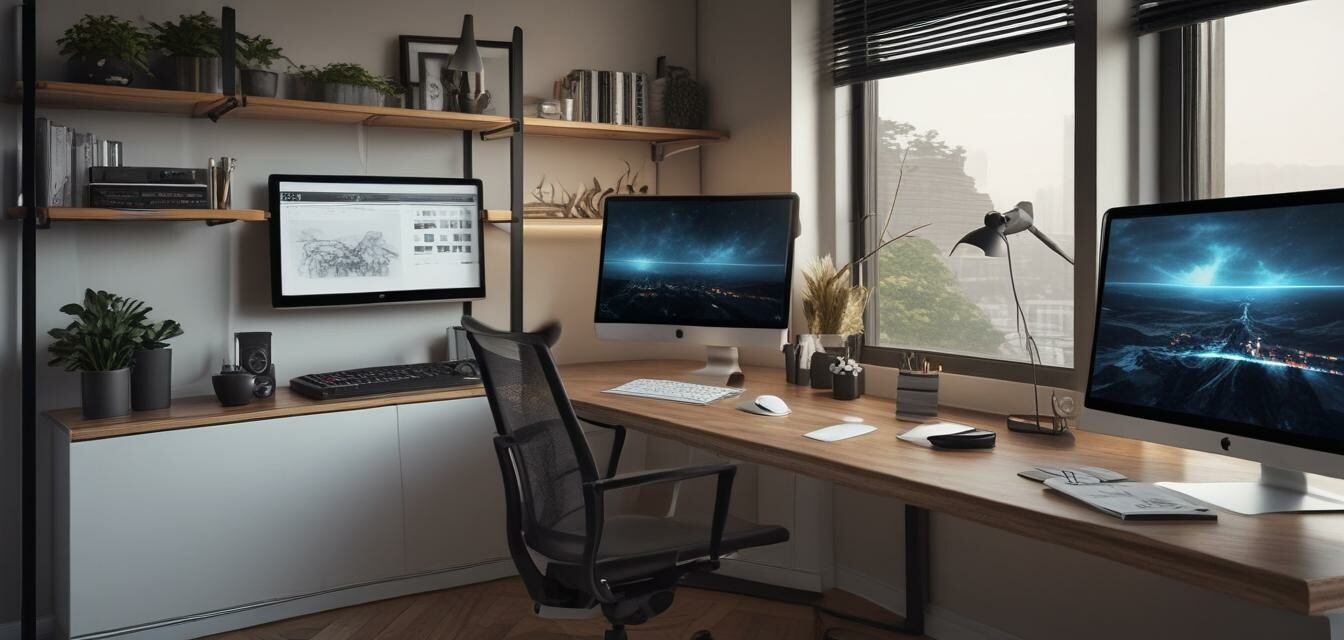
Creating the Perfect Multi-Monitor Setup at Home
- Choose the right monitors and arrangements to suit your workflow.
- Invest in a quality docking station for seamless connectivity.
- Use effective cable management solutions to keep your workspace tidy.
- Consider ergonomic accessories to enhance comfort during long working hours.
- Optimize your network solutions to ensure smooth performance.
Setting up a multi-monitor configuration at home can significantly enhance your productivity and efficiency, especially if you work from home or engage in intensive online tasks. With the right components, such as monitors, docking stations, and ergonomic accessories, you can create a workspace that enables you to multitask effectively. In this article, we will share valuable tips and tricks for creating the perfect multi-monitor setup tailored to your individual needs.
Why a multi-monitor setup is beneficial
A multi-monitor setup can transform the way you work. Here are some key benefits:
- Improved productivity: Ability to view multiple applications simultaneously.
- Enhanced organization: Easy arrangement of tasks across screens.
- Better collaboration: Simplifies sharing data during video calls or meetings.
Key components for an ideal multi-monitor setup
Before diving into the setup process, let’s take a look at the essential components you will need:
| Component | Description |
|---|---|
| Monitors | High-resolution screens to display multiple applications effectively. |
| Docking Station | Central hub for connecting multiple devices and monitors seamlessly. |
| Ergonomic Accessories | Products like keyboard trays, monitor risers, and supportive chairs. |
| Cable Management Solutions | Tools to keep cables organized and clutter-free. |
| Network Solutions | Reliable internet setup for smooth operations. |
Steps to set up your multi-monitor workspace
Follow these basic steps to create your efficient multi-monitor setup:
- Select your monitors: Choose monitors that align with your work needs, considering size, resolution, and design.
- Arrange the monitors: Position your monitors at an eye level for optimal viewing. A “3-screen setup” or “L-shaped setup” often works best.
- Utilize a docking station: Set up your docking station to simplify connectivity with your laptop or PC.
- Organize your workspace: Use desk organizers and furniture to maintain cleanliness and order.
- Implement cable management: Use clips, sleeves, and trays to hide and secure cables.
- Test your configuration: Ensure all devices are connected and functioning properly.
Choosing the right monitors
The choice of monitors can make or break your multi-monitor experience. Here are some factors to consider:
- Size: Larger monitors provide more screen space but may require a bigger desk.
- Resolution: Higher resolution provides clearer images, which is essential when multitasking.
- Panel Type: IPS panels offer better color accuracy, while TN panels are often faster.
Ergonomic considerations for a comfortable setup
Creating a comfortable workspace is crucial for productivity. Consider the following ergonomic tips:
- Monitor height: Keep monitors at or just below eye level.
- Chair support: Invest in an adjustable chair that supports your back.
- Keyboard and mouse placement: Ensure these devices are at a comfortable height for easy access.
Tips for enhancing your multi-monitor workspace
- Consider software solutions for better window management.
- New lighting solutions can improve focus and reduce eye strain.
- Personalize your workspace with plants or artwork for motivation.
Conclusion
A multi-monitor setup has the potential to supercharge your work efficiency and comfort. By carefully choosing your monitors, utilizing ergonomic accessories, and adhering to organizational principles, you can design a workspace that caters to your unique needs. For more tips on enhancing your home office, visit our DIY Tips and Tricks section or explore our Computer Peripherals.
Pros
- Increased efficiency with multiple displays.
- Streamlined workflow reducing task switching.
- Personal variety in workspace configuration.
Cons
- May require a larger desk space.
- Can become overwhelming for new users.
- Potential for higher costs depending on components chosen.